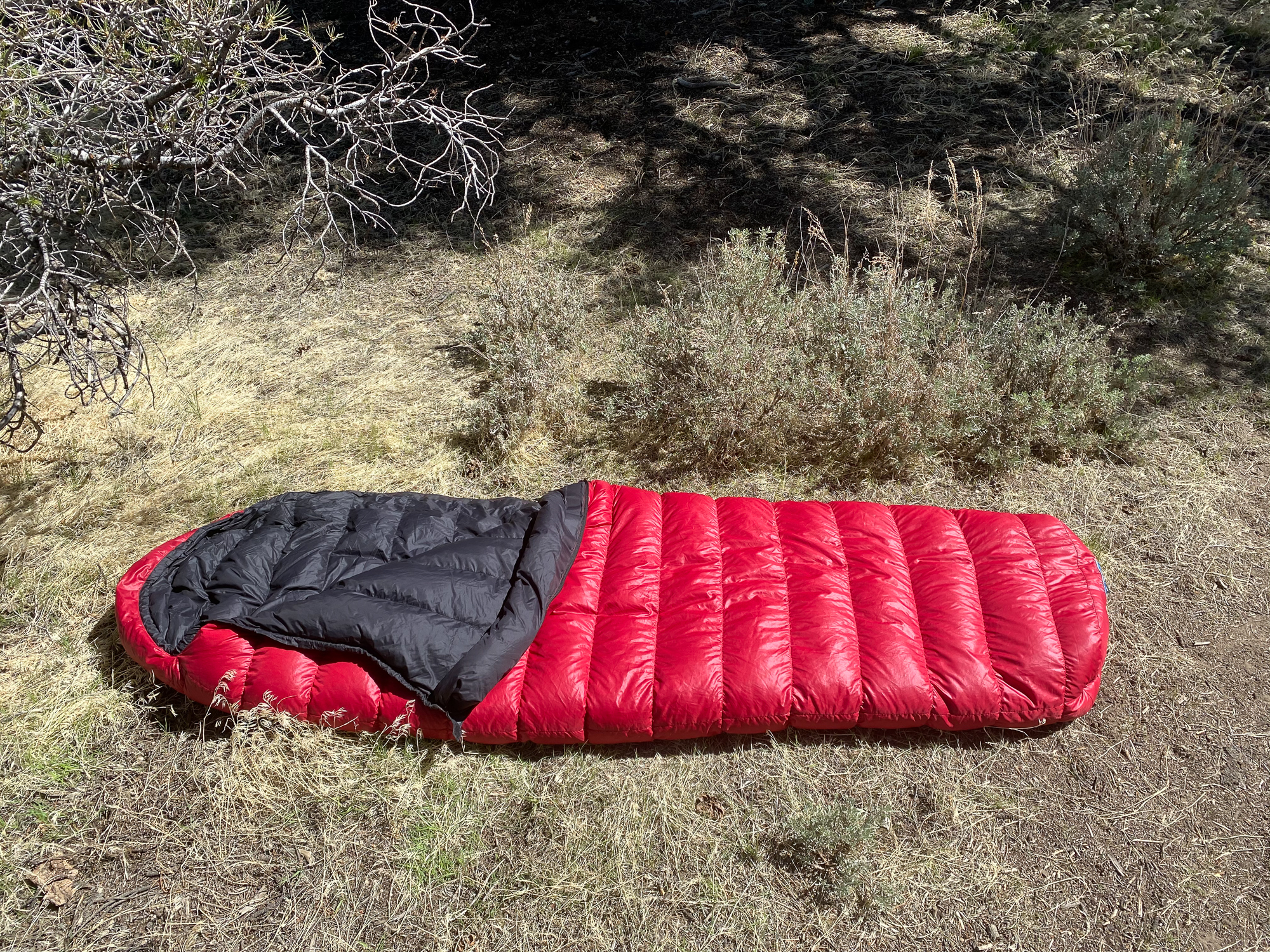Editor’s Note: This article was originally published in Overland Journal’s Gear 2022 Issue.
There’s nothing like sliding into a cozy sleeping bag at the end of a long day in the wild. Whether you’re ensconced in a tent, tucked away inside your vehicle, or dirt camping under the stars, a comfortable bag is essential to a restful night. For motorcycle camping, where weight and space are important, my criteria for a personal cocoon are warmth, comfort, lightweight, and small packed size. That’s a tall order, but Western Mountaineering has hit the sweet spot with their 25-degree, semi-rectangular Sycamore MF bag. I’ve had mine for over seven years, and of the five bags in my closet, it’s my first choice for all three-season camping.
My regular-size Sycamore MF fits campers up to 6 feet tall, weighs 2 pounds, and boasts 5 inches of loft from 17 ounces of 850+ fill power goose down collected from the nests of free-range geese. Western’s hood design lets me gather a shroud of down around my head without closing the hood to a tiny breathing hole. In addition, their continuous baffle construction facilitates moving the down between the top and bottom, depending on conditions. Should my feet get too warm, I can open a zipper on the foot box; on warmer nights, the two-way main zipper further enhances airflow or allows a complete unzip to lay the bag flat. The final comfort touch is the bag’s semi-rectangular shape, which creates plenty of room to stretch out and roll over. All of this packs into an 8- x 15-inch stuff sack, ready for a pannier, duffel, or backpack.
As crucial to the Sycamore’s light weight as its high-loft down is the fabric that contains it. For this task, Western uses MicroLite XP, a high-thread-count, 20-denier microfiber that is water-resistant, breathable, downproof, and weighs just 1.2 ounces per square yard. I spent several nights sleeping under the stars on my 2020 Idaho BDR ride, waking each morning to heavy dew covering my bag but never penetrating the fabric. Likewise, I’ve enjoyed many nights on the rough wooden deck of a remote cabin in the Mojave without snagging a single thread. And when a cold desert wind slides down the canyon, the microfiber shell keeps it at bay. Sleeping in light clothing, I have been comfortable at 30 degrees. Western Mountaineering makes their sleeping bags in San Jose, California, and protects them with an unlimited guarantee against defects. The only obstacle to owning one is price, but quality like this doesn’t come cheaply.
$495 | westernmountaineering.com
Our No Compromise Clause: We carefully screen all contributors to ensure they are independent and impartial. We never have and never will accept advertorial, and we do not allow advertising to influence our product or destination reviews.


